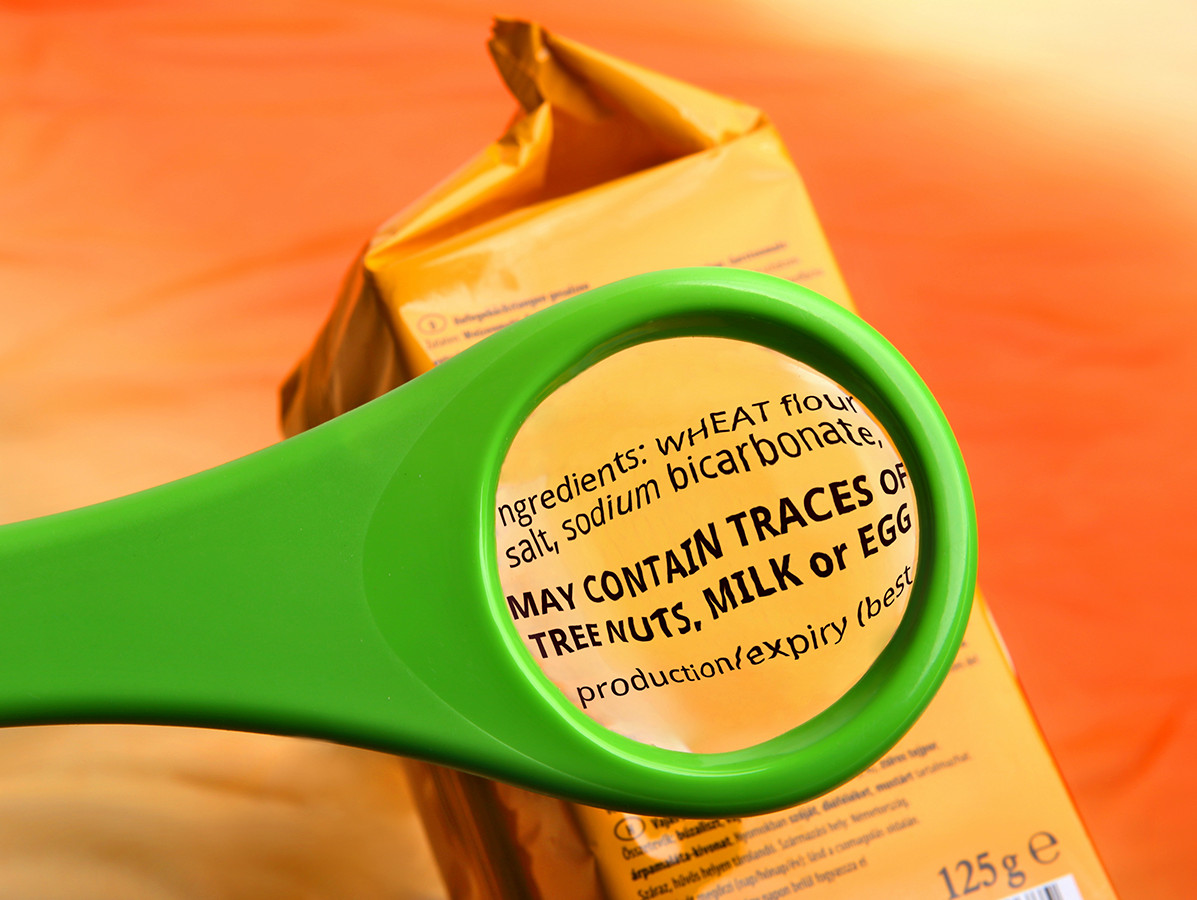
Communication experts from the Faculty of Humanities, experts from the UMC Utrecht and TNO researchers developed a proposal for an optimal food label where people with an allergy or intolerance can easily find the relevant information. In addition, they gave six recommendations that the industry can work with.
Walk into a random supermarket and you will be overwhelmed by the sheer diversity of products and labels. This may not be a problem for most people, but if you have to take a food allergy into account, it is. The numerous labels all display the allergy information in a different way, which certainly does not help the customer when trying to find out if they can eat the product or not. Communication experts from the Faculty of Humanities as well as experts from University Medical Center Utrecht (UMCU) and the Netherlands Organisation for Applied Scientific Research (TNO) have joined forces to come to a joint proposal for a food label which makes it much easier for people with a food allergy or intolerance to identify the information they need.
“At TNO and University Medical Center Utrecht, we found that patients regularly present unexpected allergic reactions from eating certain products. One of the causes turned out to be inadequate food labelling, which should be an important if not the most important way for a consumer to decide whether the product is safe to consume”, says TNO researcher Marty Blom. “It was, therefore, a no-brainer to start the collaboration with allergist André Knulst and communication experts Bregje Holleman and Leo Lentz on the improved food labelling. The project unites the knowledge available in the three separate groups.”
Research shows that food labels could be much clearer. “They are often like puzzles, in which sometimes the texts are unreadable as a result of, for instance, transparent packaging with white letters against a yellow background. Moreover, the order of the relevant information is almost always slightly different from that on another label”, explains Leo Lentz. “We have analysed over 300 food labels in supermarkets against a range of aspects that influence the findability and understanding of the information for consumers with a food allergy or intolerance. Colleagues from the University Medical Center Utrecht and TNO assisted in the interpretation of the labels and indicated the issues that the patients encounter in their daily lives.”
The Dutch and European legislation concerning food labels is readily available but allows much room for interpretation by the manufacturers and supermarkets. Before she started studying the food labels, Bregje Holleman had not realised the current wide diversity in formulations: “Labels may state that the product was ‘Produced in a facility that also processes peanuts’, but also that the product ‘May contain peanuts’. Do these statements mean something different? Should you refrain from eating either product if you have a food allergy or not?” “Experts at TNO were able to tell us communication experts everything about the relevant legislation”, adds Leo. “Previously, I did not think twice when reading formulations such as ‘May contain peanuts’, but now I know they mask a whole world of European and Dutch legislation.”
In close collaboration, the researchers wrote a proposal for an optimal food label that allows the easy identification of the relevant information by people with food allergies and intolerances. They also provided six recommendations for the industry to start implementing. These suggestions are not only relevant in the Netherlands but to food labelling industries worldwide.
Six recommendations to improve the communication concerning the food allergen information:
Marty Blom: “A food label is not a medical insert, it is also a means of communication for the manufacturers. As a result, the label must allow sufficient leeway to provide other information. Our recommendations enable individual companies to take some first concrete steps (think of readability), but in order to realise genuine improvements for this group of patients, the standardisation of all the information is crucial.”
Further research
In the near future, two experiments will be reported in which the interpretation of allergy information is examined, depending on the exact wording. Does one find it riskier to eat something that "may contain peanut" or when it says that it is "produced in a factory that also processes peanut"? A series of interviews were also conducted with food manufacturers and retailers: why is it that the way allergy information is given varies so much between manufacturers, brands or products? How does a manufacturer actually know if there is a risk that a product contains an allergen? And how is it determined in which way this is warned? Ultimately, the researchers want to provide a complete picture of the rationale (or lack thereof) behind allergy communication and come up with concrete recommendations for improvement.
Source: Universiteit Utrecht